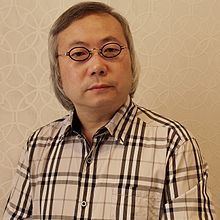 | ||
Fu wenjun top 6 facts
Fu Wenjun (Chinese: 傅文俊; pinyin: Fù Wénjùn, born 1955) graduated from Sichuan Fine Arts Institute. He is a contemporary artist who works on conceptual photography, installation art and oil painting. Currently he lives and works at Chongqing.
Contents
- Fu wenjun top 6 facts
- Fu wenjun intervista
- Main solo exhibitions
- Main collective exhibitions
- Main works presentation
- References
Fu wenjun intervista
Main solo exhibitions
Main collective exhibitions
Main work's presentation
Thoughtful Images 204-2015 - Fu Wenjun tells us, through idiomatic images, about questions which are as old as human species. Doubts and realities which grip mankind since ancient times, but which are at the same time really actual reality, a reality proved by using arcane signs, violently projected and sounded out, but still preserving integrity. We are talking about signs which are impressed in the general unconscious. That means that, beyond their historical value, they own an absolute and unconscious existence, innately associated to a concept, also in the unspoilt minds.
Pick at Random 2012 – The symbols of various cultures are juxtaposed, in order to create new meanings by making use of different art languages from different times and places.
Totem 2012 – Through the use of the newest multimedia montage, the visual effect of this work is extreme. The multimedia artistic language makes the work’s display and its transmission different from the medium itself, so the perceived relationship between the subjective viewer and the objective photography is changed. ---Luo Yiping, Curator of the Guangdong Museum of Art
Story of Expo Park 2013 – In 1900, the Eight-Nation Alliance (the United Kingdom, Russia, Germany, France, the United States, Japan, Italy and Austria) invaded China, leading to the tragedy that happened at the Summer Palace. After more than one hundred years, they came again to China and built their national pavilions in Shanghai Expo Park. In this work, the ruins of the Summer Palace are juxtaposed with their national pavilions; the open notebook seems like a history book, recording and telling the great changes in its history. It shows that China has released the heavy cultural burden, has formed a new national and cultural attitude of self-confidence due to the contact with the new world.
Thought Reading 2010–2011 – The radiography technology is used to imitate the human body’s skull image, in order to present ideas in the human head. Buddhist sculptures take the place of the contents of the brain tissue, which makes the work present the superposition of the fictional with the authentic.
Echo 2009 – In this work, the Chinese national emblem is added to photos of obsolete buildings and industrial installations, with speckled colors. This refers to the disappearance of the cultural subjectivity under the control of national authoritarianism in the industrial civilization.
